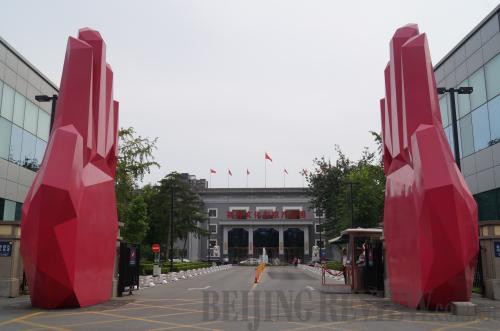|
 |
|
LEGEND: After renovation, the obsolete factory buildings of Beijing No.2 Textile Mill have regained a new life as a culture and creative industry park in east Beijing (TANG YUANKAI) |
Several kilometers east of Beijing's central business district lies Legend Town, a culture and creative industry park transformed from an obsolete textile mill.
In the 1950s, the Beijing No.2 Textile Mill was established on this patch of land. The factory was the largest of its kind in China, and the first to use domestically developed textile equipment.
After the founding of the People's Republic of China in 1949, Beijing focused on developing its industry and built a number of factories. After the 1980s, the great capital city began to adjust its industrial structure by gradually moving many production facilities—including all textile mills—out of the downtown areas. The original sites of many of these factories have been developed into commercial residences or high-end office buildings.
The former site of the Beijing No.2 Textile Mill faced the same destiny, but it was luckier than other factory sites in that a distinctive plan for its reuse was eventually made. After consulting experts and conducting feasibility studies, the government of Chaoyang District, where the land is located, decided to renovate the old factory complex into a high-end park for cultural and creative industries, particularly media and publishing, while preserving the history of the location.
Renowned Japanese designer Kengo Kuma was hired to oversee the project. He used techniques such as structural segmentation, natural illumination and vertical planting to transform the factory while retaining its original architectural features.
The old factory had several spacious workshops. The designer kept every main beam and column in these areas, and even their sawtooth-shaped roofs.
The old structures were also reinforced according to modern standards to make them quakeproof. Infrastructure such as its sewage system was also upgraded.
Legend Town gained its name as the renovation project was completed in March 2011. Now it is synonymous with success in industrial heritage preservation.
Neglected
When talking about cultural heritage, people tend to think of ancient relics. Industrial sites are generally considered as the places where people work rather than a source of heritage. As a result, preservation of industrial sites is often overlooked.
In recent years, a growing number of traditional industrial structures and facilities have faded into obscurity alongside China's rapid urbanization process and industrial restructuring. Amid soaring property prices and surging wave of commercial property development, some obsolete factories were torn down.
Shan Jixiang, curator of the Palace Museum in Beijing, also known as the Forbidden City, and former head of the State Administration of Cultural Heritage, warned that industrial heritage has been disappearing at a faster rate than other historical sites.
According to Shan, the Chinese people had lived in an agricultural civilization for thousands of years, while over the past century or so, the introduction and development of modern industries in China has significantly changed people's lifestyles and culture.
| 